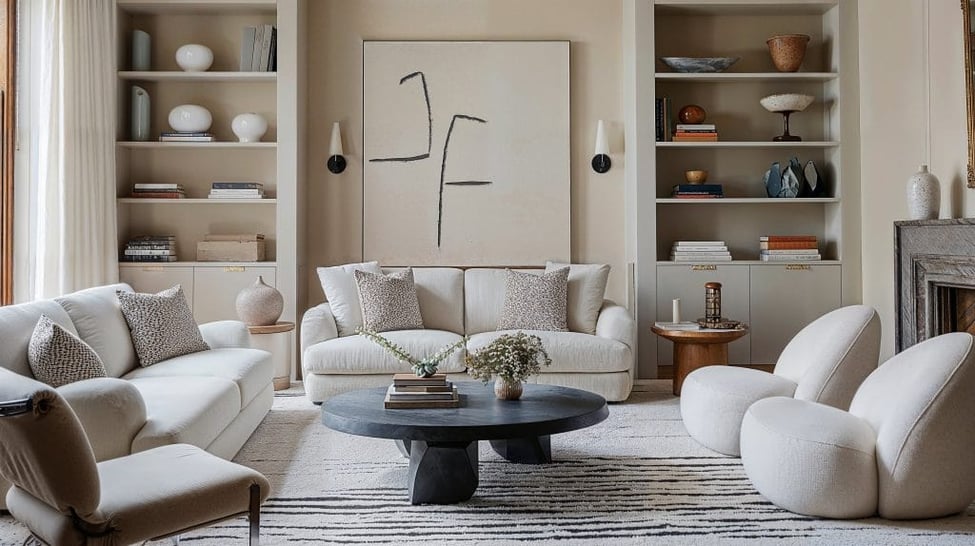If you're anything like us, you have a deep appreciation for great design. You binge HGTV, curate Pinterest boards, and may or may not reroute your drive home to admire that perfect piece from Guff or Hollace Cluny. We get it—style matters.
But when it’s time to sell your home, your impeccable taste might not be doing you any favours. In fact, even the most thoughtfully designed, high-end interiors can be just as distracting—or polarizing—as an outdated or cluttered space. Here’s why, and what to do instead.
Decorating vs. Staging: It All Starts With Purpose
The key difference between decorating and staging lies in intent. Decorating is all about expressing your personal style; staging is all about appealing to as many buyers as possible.
That avant-garde backless couch you sourced from Kiosk? Gorgeous. But buyers might just see a back injury waiting to happen. And while your oversized Frida Kahlo print makes a bold statement, it may overwhelm someone trying to picture themselves walking up those stairs every night.
You’re not selling your stuff—but buyers need to see the home, not your personality. Staging strips away personal style to create a clean, neutral canvas that helps buyers imagine their own lives in the space. That emotional connection is what sells.
Function: Defined Use Over Personalized Space
Designing your home to suit your needs is the joy of ownership. But when selling? Specificity can confuse buyers.
Turning a bedroom into a luxe walk-in closet or your basement into a massage therapy spa may make perfect sense for you—but it can leave buyers scratching their heads. Where’s that third bedroom? What’s this room supposed to be?
Staging restores clarity. Three bedrooms, a dining room, a family-friendly basement. Buyers want to see functional spaces they can customize—not puzzle over how to rework your layout.
Feel: Cold & Curated vs. Warm & Inviting
Beautiful design can sometimes feel... cold. Museum-quality furnishings, sharp lines, and polished finishes are stunning—but can leave buyers feeling hesitant, like they’re walking through a showroom, not a potential home.
Staging brings warmth and comfort. It creates a welcoming, lived-in vibe that invites buyers to picture themselves relaxing, entertaining, and creating memories. When buyers feel “at home,” they’re far more likely to make an offer.
Space: Overloaded or Underutilized vs. Just Right
Even the best-decorated homes can fall into one of two traps: too much furniture or too little. Overfurnishing makes rooms feel cramped. Underfurnishing leaves buyers unsure about how the space functions.
Staging finds that sweet spot. It highlights square footage, flow, and storage potential—carefully editing everything from furniture to accessories so buyers see the space, not the stuff.
The Bottom Line: Let Go to Move On
Selling your home means emotionally detaching from your beloved design choices and allowing buyers to envision their own future there. It’s not about stripping away your style forever—it’s about creating a blank slate that makes your home irresistible on the market.
The good news? You get to bring your great taste with you to your next home—and start fresh.

